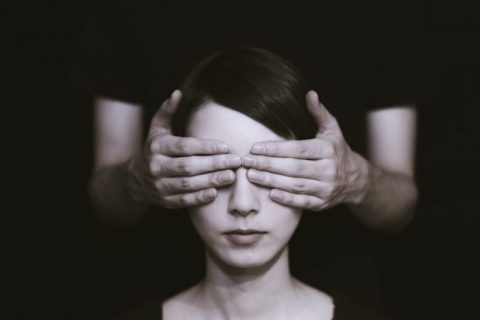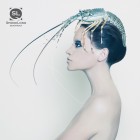One of the most interesting, and present, things about this story is the way it is structured. Why did you decide to use snapshots as a way of telling?
Time is fractured, or our memory of it is. In my life, there are these intense moments of being that glow—with catastrophe or love, or clear, cold pain, shock, or fear;—and they are the ones that bubble up from under the floorboards of your brain and spider around in your mind when you are lying in bed trying to sleep.
Or even when you are locked in sleep. I have had dreams that have changed my waking life—the novel I’m writing today began in a dream. Nightmares are important, too—as is sleep paralysis. I have the full nocturnal experience. Lucky me.
I get murdered a lot in the night. But that’s pretty funny, right? We are just big bags of blood and guts and fear.
I think that laughing at pain is universal, and the closest I can get to truth in any narrative. Black comedy is truth standing on its head to get attention.
Or perhaps I am just a maladjusted weirdo.
Colors play an important role here, like the black, the white, the mollusk with “blue-green blood.” So do animals and their relationship to human emotions. In some ways, combining the structure of the story with the colorful imagery gives it the feel of a painting where one can look at different pieces and take away different things or look at the whole and make an impression. How did you foresee or expect the reader to engage with this piece?
Nothing matters outside your own gut reaction!
I did not write this story with the expectation that anyone would ever read it. I had no expectations of a reader, and I still don’t—that is not my business.
I wrote it from a starting point of color, black and white, positive and negative. You can’t write about love without a shadow of “once upon a time—happily ever after.” But life is not that simple.
There are these patterns, structures, myths of “love” all around us. We are flumping around in the middle of it all, attempting to make ourselves. We all flashback and edit. Jump around. Add in footnotes. Sometimes we try to start over with a clean slate.
But at best, we are palimpsests—we are erasing and rewriting truths to suit us. There are always going to be holes and scratches, and old colors and dead bugs and dirty fingerprints, under the clean, bright-white paint.
In the story, you make references to mythological figures and “classical half tales.” That is an interesting concept since the story itself reads like a half-tale based on the kind of life so many can relate to. Was this a deliberate choice and if so, what attracted you to it?
Storytelling is a mix of lies and truth—half-patterns and half-structures that you fall into, that support you, and make you, you.
I don’t know if it was a deliberate choice to write about that; it is just an important thing. Maybe the most important thing of all. It is why stories are more than just escapism, they are a survival mechanism.
Maybe it’s as simple as this: I did not go to school much as a kid; I would sneak off and go to the city library instead. School was pointless. It was a vast bunker on what was then the biggest council estate in Europe. They would teach the same basic stuff year after year to appease. It was a vast babysitting network for angry disruptive kids, not a place to learn. So, I would skive, and jump on the 94 bus, and go forth to this vast hunk of Brutalist concrete architecture, full of words.
I learned far more there, randomly memorizing Jane Austen, or stockpiling facts about Turkish embroidery and Spitfires, than I ever could have done at school. I read myths, legends, anything.
Being self-taught gives you crazed patterns of thought. Odd, half-useless cul-de-sacs of knowledge.
But it is the structures of those half-stories hurtling around my brain that make me uniquely me.
I feel like all characters must have something like this skeleton of history and highly specific stories inside them. That is what I think may be in this story: a feel of the truth, or of the scattergun of specific half-moments of being that make up the structure of these characters’ entire relationship.
The story deals with so much darkness and yet the sentences that hold the darkness up are constructed beautifully. What do you think about the idea of beauty combining to construct something “ugly”?
I try to write with honesty, and humor, and risk, which is something that the poet Hera Lyndsay Bird does.
If you write with honesty, it’s going to get ugly. Which is good, because ugly is often funny. And funny is beautiful.
I loved the image of frozen white paper slips with people’s names on them. Have you ever done such a thing? Something similar?
Talismans, rituals, habits, superstitions—I have them all. I’m writing a novel right now with lobsters in it, and so I must wear my silver lobster amulet necklace, every single day. I must.
I don’t want to displease the lobster Gods.
It’s all an attempt to impose order on a chaotic universe, and it’s all bollocks, but it’s also good. It’s belief in something more than being a puny human.
Even though I think that superstitions and religions are empty and bereft of substance, I like the rituals. I’m in awe of the universe, because every day I write, it is like living inside some kind of insane magic spell.



 The core workshop of SmokeLong Fitness is all in writing, so you can take part from anywhere at anytime. We are excited about creating a supportive, consistent and structured environment for flash writers to work on their craft in a community. We are thrilled and proud to say that our workshop participants have won, placed, or been listed in every major flash competition. Community works.
The core workshop of SmokeLong Fitness is all in writing, so you can take part from anywhere at anytime. We are excited about creating a supportive, consistent and structured environment for flash writers to work on their craft in a community. We are thrilled and proud to say that our workshop participants have won, placed, or been listed in every major flash competition. Community works.